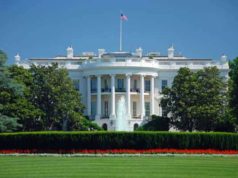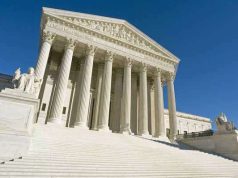Table of Contents

A Comprehensive Guide to Article 1: The First Article of the Constitution
Introduction:
Article 1 is the first article of the United States Constitution and is an essential pillar of the American legal system. This article establishes the legislative branch of the government, outlining its powers and responsibilities. In this article, we will give a detailed explanation of Article 1 and its importance in the American legal system.
Section 1: Historical Background
The concept of a legislative branch tasked with creating laws dates back to ancient Athens, where citizens would gather in a representative assembly to debate and pass laws.
The Founding Fathers of the United States were heavily influenced by ancient Greece and Rome when they drafted the Constitution. They wanted to create a legislative branch that represented the people and would provide a system of checks and balances on the power of the executive and judicial branches.
Section 2: The Powers of Congress
Article 1 outlines the powers and responsibilities of Congress. Its primary responsibility is to create, debate, and pass laws that benefit the American people. Congress is granted several powers under Article 1, including:
– The power to regulate commerce
– The power to coin money
– The power to establish post offices
– The power to declare war
– The power to collect taxes
These enumerated powers are listed in Article 1, Section 8 of the Constitution. The ability to levy a tax on income was established under the 16th Amendment to the Constitution, which has been used to fund various government programs and initiatives.
Section 3: The Structure of Congress
Article 1 establishes a bicameral system of Congress, consisting of the Senate and the House of Representatives. The House of Representatives is responsible for representing the people on the basis of population, with each state receiving a number of representatives based on its population. Representatives serve two-year terms.
The Senate is made up of two senators from each state, regardless of population. Senators serve six-year terms, with one-third of the Senate up for reelection every two years. This structure ensures that both the people and the states are represented in Congress.
Section 4: The Importance of Article 1
The legislative power granted to Congress under Article 1 is a vital component of the American legal system. It reflects the principle of federalism, in which power is divided between the federal government and the individual states.
The ability to create and pass laws ensures that the representative democracy the United States is built upon functions as intended. This system of checks and balances guarantees that all branches of the government operate within the established framework of the Constitution.
Congressional oversight is another critical role of legislative power. This power provides Congress with the authority to oversee and investigate various aspects of the executive branch. This allows Congress to ensure that the executive branch acts in accordance with the law and the will of the American people.
The power to declare war is another critical aspect of Article 1. The founding fathers of the United States believed that the decision to go to war should be made by the legislative branch rather than a single individual or group of individuals. This provision ensures that the decision to declare war is subject to a thorough debate and discussion reflecting the will of the people.
Conclusion:
Article 1 is the cornerstone of the legislative branch of the United States government. Its enumerated powers give Congress the ability to regulate various aspects of American life, from interstate commerce to settling disputes between states.
Congressional oversight and the responsibility to declare war ensure that the executive branch operates in accordance with the will of the American people. These checks help safeguard the democratic process and ultimately maintain the stability and integrity of the American legal system.
The Constitution of the United States of America is where the United States Federal Government derives its power. The Constitution is considered to be the supreme law of the United States. The first three Articles of the Constitution define what was to become the three branches of government in the United States, with each addressing each branch.
The First Article of the Constitution provides for the structure of the Legislative Branch. It also delineates the powers and responsibilities that the Legislative Branch is to have. The First Article is divided into ten sections, each addressing aspects of the Legislative Branch in terms of composition, member eligibility, and duties. First Article establishes The Congress, which is to become the ruling body of the Legislative Branch. Congress is a bicameral legislature, consisting of two Houses known as the Senate and the House of Representatives.
The legislative process requires that both Houses act together, for any procedure requires approval of both. Congress as it is constructed in the First Article is a deviation from the Congress of Confederation that was set up by the Articles of Confederation in 1781. The Congress of Confederation was a unicameral legislative body that had minimal authority when compared to the power granted to the states. The reason that this structure was implemented was out of the fear and prevention to allow a central body of Government to maintain all the power and authority, thus creating for the possibility of a tyrannical government.
After the American Revolution, an oppressive and all-controlling government is exactly what the United States wanted to avoid. However, a unicameral legislative branch prove to be ineffective. The Constitution’s First Article would call for a bicameral legislature, in which each House would have specific and unique powers and authority in order to maintain a balance. The House of Representatives, also referred to as the lower House of Congress, was created to provide for representation in the Federal Government that would be proportional to each State’s population. For example, California currently has the highest population in the United States, and therefore, has the most representatives in House, with 53 representatives.
The House of Representatives is to be comprised of no more than 435 members, with each State having at least one representative. The presiding officer of the House of Representatives is Speaker, who is elected by the other members. The Constitution allows for the specific powers to initiate revenue bills, the authority to impeach officials, and elect the President of the United States in case there is a discrepancy or stalemate in the Electoral College. However, the most important power granted to the House by the First Article of the Constitution is the ability to pass legislation at the Federal level, which will have effects on the nation as a whole.
However, bills must also be approved by the Senate and the President before being enacted into law. The United States Senate, which is also known as the upper House of Congress, is also implemented with the idea of allowing for State representation at the Federal level. Unlike the House of Representatives, however, representation is not contingent upon population numbers of each State. In the Senate, each State is represented by two senators. The leader of the Senate is called the President of the Senate, but is actually also the Vice President of the United States. However, the Vice President does not have the authority to vote on matters, unless there is a tie in the polling process.
The First Article of the Constitution grants certain powers to the Senate, which are not given to the House. Generally speaking, it is considered for the State to be more prestigious because of the fact that there are less members and offers more deliberative decisions. The Senate has the power to approve treaties as a condition for ratification, as well as the approval of Federal officials, such as Cabinet secretaries, Federal judges, military officers, and other Federal uniformed officers.
The Senate also has the power to try Federal officials that are impeached by the House of Representatives. Another important factor of the First Article of the Constitution, besides creating and enumerating powers for Congress, is that it also implements limits of power of the states. The states are explicitly prohibited from making their own money, taxing goods from other states, and entering into treaties, alliances, or confederations. The states are also not allowed to create their own navies nor enter into war. It is also addressed in the First Article of the Constitution that any limits placed on Congress, such as suspension of habeas corpus, titles of nobility, and ex post facto laws, are also prohibited to the states.























